OLED vs QLED: which is the best TV technology?

As if there weren’t enough acronyms in the TV world, two of the biggest competing technologies are also acronyms… and they look pretty alike with written down too. But in fact, they’re very different indeed.
‘OLED’ stands for Organic Light-Emitting Diode, while ‘QLED’ stands for Quantum (Dot) Light-Emitting Diode. Along with Mini LED, these telly types pretty much have the TV world wrapped up, so there’s a good chance if you’re looking at buying one of the best TVs that it will be based on one of these two technologies.
But what are the differences and which should you buy? We’ll take you through the basics of each technology and what they're good at so you can work out what’s going to be best for you. What about QD-OLED and Neo QLED, we hear you cry? Panic not, we’ve got you covered on those too.
Without further ado, here comes the science bit. Concentrate.
What is OLED?
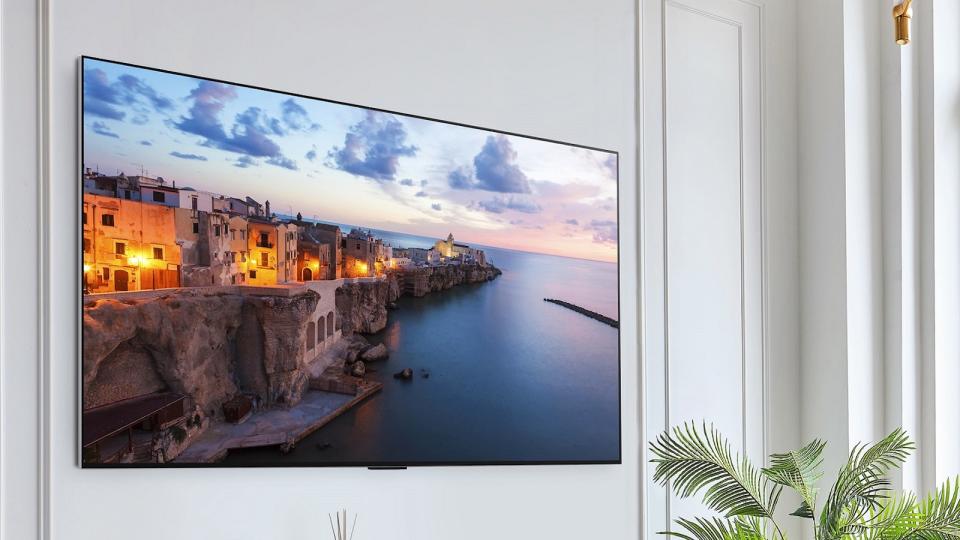
At a basic level, OLED panels are made up of a carbon-based organic compound sandwiched between two electrodes. When an electrical current is passed through these layers, they emit a white light, which is then passed through an RGB colour filter to make a picture – and part of what makes OLED so good is that this is all possible on a pixel-by-pixel basis.
All of the OLED panels on the market, even those used by Panasonic, Sony, Philips and others, are currently made by LG Display. That is, except for Samsung’s more recent development of QD-OLED, which is worth a quick explanation too.
QD-OLED is a hybrid panel technology (used in the likes of Samsung's flagship S95D), which takes the basic premise of OLED but throws in a layer of tiny quantum dots (which we’ll talk about in the QLED section) over the pixel layer, breaking each one down to red, green and blue subpixels from the get-go – with no need for a colour filter.
The argument is that, since the light doesn’t have to pass through a luminance-sapping filter, QD-OLED can get brighter than traditional or regular OLED (sometimes also referred to as WOLED, with the “w” standing for “white”).
Of course, regular OLED has recently employed some newer tricks to keep up with this development, like MLA (Micro Lens Array) technology which aims to recapture some of the brightness lost to colour filters, and heat sinks that enable the panel to be driven brighter than before.
What is QLED?
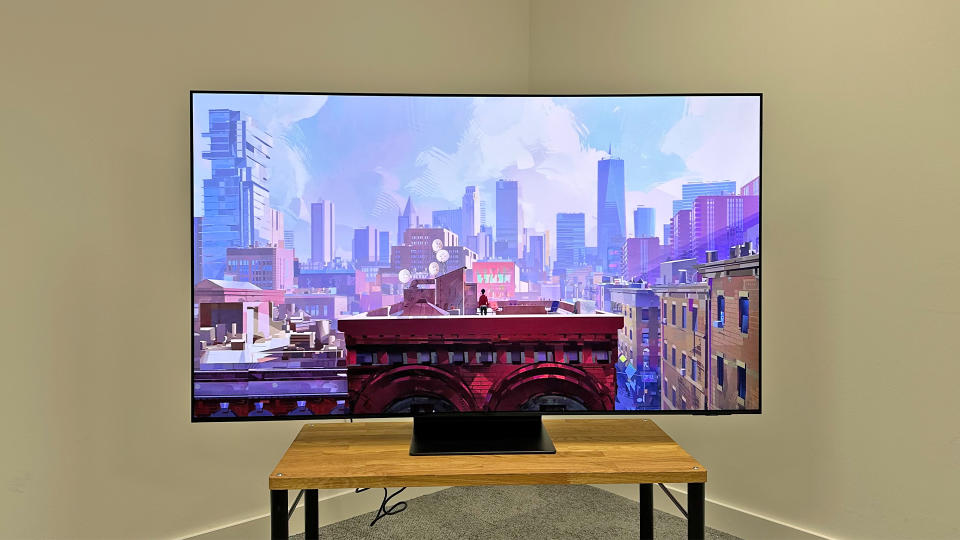
QLED is based on LED TV technology, and the big difference here compared with OLED is that instead of pixels that emit their own light, there’s a backlight filled with LEDs, clustered into small independently controllable zones, which produce the light for your TV.
In a traditional LCD TV, this light shines through a number of different layers, including a liquid crystal display (LCD), to create the picture, but in a QLED TV, there’s also an added layer of quantum dots, which increases the colour vibrancy of the picture compared with standard LCD. You can read more about the differences here in our QLED vs LCD feature.
Samsung has been most commonly associated with QLED TVs, but actually other manufacturers including LG (under the brand name QNED), Hisense, Sony and TCL also use the technology.
“Neo QLED”, on the other hand, is the Samsung-only branding for its Mini LED TVs. We have a wider comparison of Mini LED vs OLED, but Neo QLED is Samsung's specific take on the tech, which adds in a layer of quantum dots in a similar way to regular QLEDs.
Apart from that, it works like any other Mini LED TV, using much smaller LEDs in the backlight, which are then also separated into many more zones. This enables Neo QLED TVs to go brighter, and also to have more precise control of the backlight, offering a contrast performance that has the potential to come much closer to OLED.
In the future, the gap could close further still. There have been a number of self-emissive QLEDs on display at industry events, including the world's first 8K self-emitting QLED display designed by BOE.
Unlike traditional QLEDs though, the quantum dot film is replaced by quantum dot nanocrystals that can produce their own light when placed in an electric field. This means that, as with OLED, it doesn't require a backlight, and each pixel can be individually dimmed as required.
Domestic application of this tech is still some way off, however, but it's something to keep an eye on over the next few years – as is MicroLED.
Why you should buy OLED
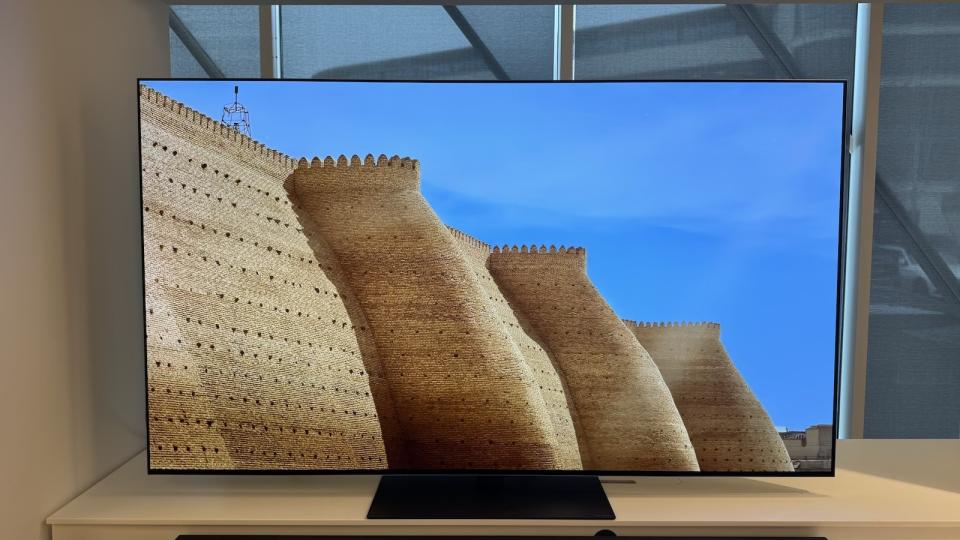
Perfect contrast performance
The biggest advantage OLED has over its QLED competitors is the way it handles light. With light being emitted on a pixel-by-pixel basis, it means that when one pixel is on, the adjacent pixel could be off, allowing for the deepest possible blacks and an infinite contrast ratio.
Even with the improvements of backlight technology and the introduction of Mini LED in recent years, QLED TVs still can’t offer the same level of precision when it comes to light control.
For example, the flagship Samsung QN95D is thought to have more than 1300 independent dimming zones in the 65-inch version – a huge improvement on older QLEDs. But with every pixel of an OLED TV able to be controlled independently, that's like having more than eight million independent dimming zones.
Ultimately that means that QLED TVs are prone to blooming – where light bleeds into darker areas of the picture from a bright object, like a candle’s flame or street lights on a dark night. Not only does this make for a so-so black level performance, it also affects the impact of high-contrast images.
You won't experience blooming on OLEDs, meaning blacks stay black and the outlines of bright objects are precise – even against the darkest background.
Better viewing angles
If you have a living room with a number of sitting positions, an OLED TV may be better since they generally have more near-perfect viewing angles than QLED TVs. That means that colours and contrast will hold firm when viewed off to the side, whereas a QLED is more at risk of a drop in colour saturation and black level. Once again, there have been improvements here on the QLED side, but OLED is still much better.
There’s also more of a chance of uniformity issues with QLED TVs, which is where the backlight is not consistently bright across the whole panel, creating a knock-on effect on picture quality. This is much less common on QLED TVs than it was on older LCD TVs though – particularly those that were edge lit – and is often only really noticeable when viewing test patterns too.
It is worth mentioning that there have been some issues with some WOLED TVs having a pink tinge, particularly to whites, when viewed at an angle. However, we haven't found this to be an issue in more recent OLEDs, so only needs to be considered if you're buying an OLED from a few years ago.
Faster response times
If you're a gamer, the pixel-level control of OLED TVs means they tend to offer the fastest response times compared with QLED TVs. This ensures you get the clearest images in the most fast-paced games, which can help to give you a competitive edge when you need it.
Better for wall mounting
With no chunky backlight to contend with, and fewer layers to its panel, OLEDs are generally able to be lighter and thinner than QLEDs, which makes them a great option for wall mounting.
It doesn't mean you can't wall mount QLED TVs, but you'll want to be more aware of their design if wall mounting is important to you.
Why you should buy QLED
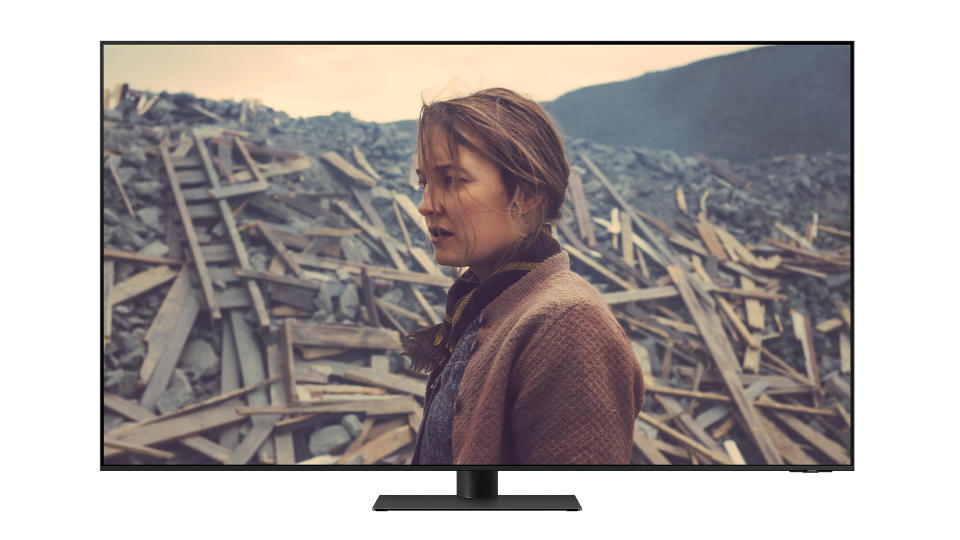
QLED can go brighter
Traditionally, QLED TVs have been able to reach higher peak brightness than OLEDs, and that is generally still the case, particularly if you aren't looking at the more expensive, next-gen OLED models.
If you are, then it's fair to say that MLA (used in the LG G4) and QD-OLED (used in the Sony A95L) technologies have upped OLED brightness levels significantly.
However, most OLED TVs still feature the 'standard' OLED panels, which are purposefully limited in terms of brightness in order to prevent burn in (see more on this below). Ultimately, manufacturers have to be careful how hard they drive the panel so not to increase the chance of burn in, or image retention, and its only in the pricier next-gen panels that there have been some workarounds for this.
That means if you're looking at more mid-range OLEDs, then QLED (and Neo QLED) have the edge here. That could make them a better choice for bright rooms, since they're able to more easily combat reflections from windows and other light sources, and it also makes them great for HDR too.
OLED's superior contrast performance arguably has the edge, but there's no taking away from QLED that it's capable of producing superb HDR pictures, particularly Neo QLED screens like the Samsung QN95D, which offer even greater brightness.
More affordable, more choice
If you're on a bit of a budget, QLED TVs are often available for less than OLED TVs, since OLED panels are comparatively more expensive to produce. While prices are steadily getting better, you'll still get more QLED TV for your money – even if you're considering Neo QLED.
Quality is variable, to say the least, particularly lower down the ranges, but Amazon's Omni QLED proves you can get a good QLED TV for a surprisingly low price, while TCL's C845K offers hundreds of dimming zones and a peak brightness figure double that of a typical OLED TV for under £1000.
You'll also have greater choice of size with a QLED screen – at both ends of the price spectrum. This is starting to change, but there are still things to consider.
For example, it wasn't long ago that you couldn't get an OLED under 55 inches, but they now go as low as 42 inches in some ranges, like the excellent LG OLED42C3.
However, as these 'small' OLEDs are currently produced in relatively low numbers, they tend to be hardly any cheaper than their 55-inch equivalents. The panels usually use less advanced technology too, resulting in lower peak brightness, and making QLED screens still well worth a look at this smaller size for the very best performance.
Thinking about a bigger TV? If you want a screen larger than a 77 inches (and don't have tens of thousands to spend), you're most likely going to need to look to QLED – many of them now go up to 85 inches as standard.
No risk of burn in
No head-to-head between OLED and QLED technology would be complete without a mention of burn-in – and QLED has the clear edge here, since it isn't susceptible to it at all.
But what is burn in, exactly? The organic nature of the materials in an OLED panel mean that there is the chance that a static image being displayed for some time, like the logo in the corner of a TV channel or a sports score for example, could "burn in" to the screen and be left there permanently.
This was a big problem with plasma TVs, and an issue with earlier OLEDs. However, manufacturers have enlisted lots of preventative measures, such as dimming any on-screen logos automatically, very subtle "pixel shifts" so a static image isn't as static as it appears, and various pixel refreshing strategies when the TV is off to ensure they're all performing at their best.
It's worth mentioning that we have never had image-retention problems with any of the OLEDs that we have tested, nor on the models that staff members have bought for use at home, so these strategies are obviously working.
That said, those manufacturers do still feel the need to warn customers about the potential for image retention either in the TV's manual or as a pop-up message on first installation – with QLED, you'll have no such worry.
OLED vs QLED: which is the best for you?
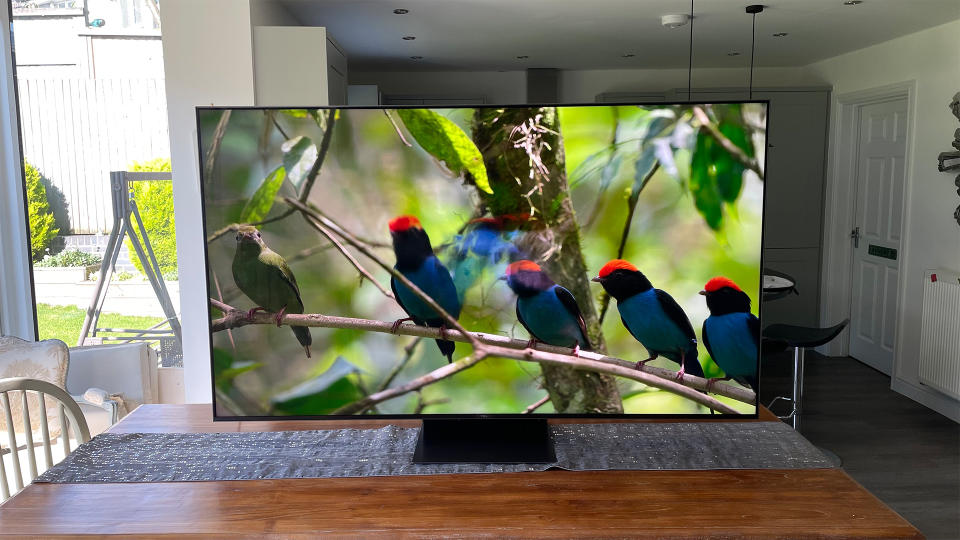
With TV tech improving year on year, the gaps between these two leading technologies have got narrower and narrower – however, as we've shown, they both still have their strengths, and it's up to you to decide what is most important in your new TV.
However, when shopping for the very best TV, it's always worth remembering that panel technology is only one part of the picture puzzle, and that a set's processing will make the biggest difference to performance.
That's why OLEDs from LG, Philips, Panasonic and Sony all look different in action, even though many use the same LG Display panel. QLEDs, even those all sold by Samsung, can have a lot of variabilities too, in terms of backlighting dimming zones, processor power, features and even resolution – our Samsung 2024 TVs page has all of the details to help break that down.
Ultimately, it's just not as easy as saying one type of TV is better than the other – every model has to be judged on its individual merits, and where an OLED comes out on top in one head-to-head, a QLED TV might win out in another. That's where our guide to the best TVs you can currently comes into its own, as well as all our in-depth expert TV reviews too.
MORE:
Check out the best TVs you can buy
Best OLED TV: brilliant budget and premium OLED TVs
LG G4 vs Samsung S95D: what are the differences between these 2024 OLED TVs?

